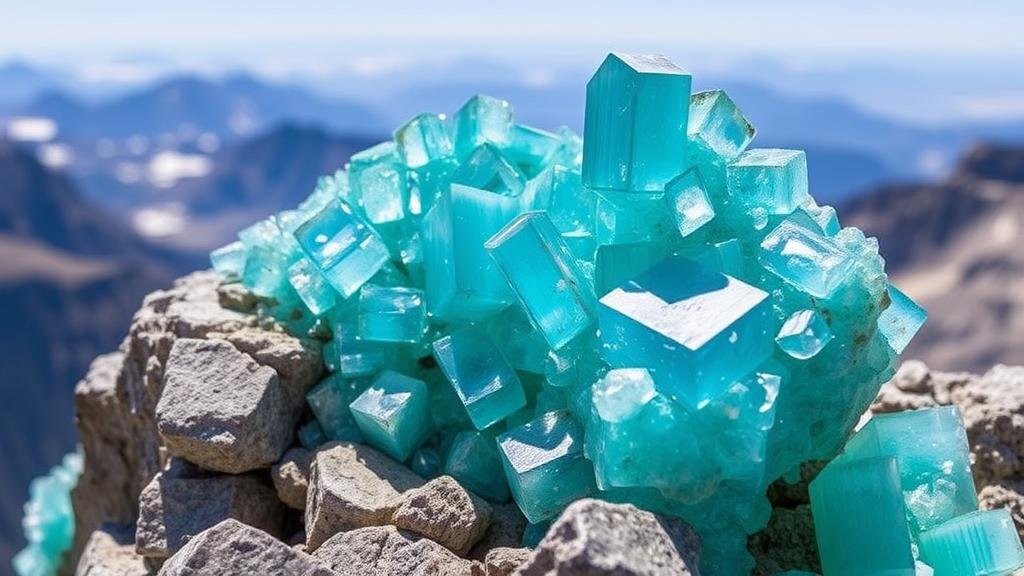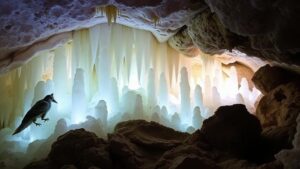Finding Hidden Beryl: Aquamarine Treasures in High-Altitude Outcrops
Finding Hidden Beryl: Aquamarine Treasures in High-Altitude Outcrops
Beryl, a beryllium aluminum silicate mineral, is renowned for its captivating varieties, with aquamarine standing out due to its tranquil blue hues. For rockhounds and mineral collectors, unearthing aquamarine treasures from high-altitude outcrops adds both excitement and challenge to their pursuits. This article explores the geological formation of aquamarine, ideal collecting locations, and practical tips for successful hunts.
The Geology of Beryl and Aquamarine
Aquamarine, a type of beryl, forms in granitic environments and can be found in pegmatite deposits, where it often coexists with other minerals such as quartz and feldspar. Geologically, beryl typically crystallizes under conditions characterized by high temperature and pressure, leading to large, well-formed crystals. The composition of aquamarine includes traces of iron, responsible for its blue color, with the intensity of color varying based on the presence of iron during formation.
Research by the American Mineralogist indicates that beryl deposits can form in specific geological settings, often requiring examination of pegmatite dikes. Understanding the conditions under which beryl crystallizes allows mineral collectors to effectively target their searches. ideal temperature range for aquamarine formation is between 600°C to 800°C, with the presence of fluids that help transport necessary elements into the crystal structure.
Prime Locations for Aquamarine Collection
High-altitude regions are particularly promising when searching for aquamarine deposits. Below are some of the most productive areas:
- The Himalayas: Particularly in Pakistan and India, known for producing large and high-quality aquamarine specimens.
- North Carolina, USA: Hosting several mines, including the Emerald Hollow Mine, where both amateurs and professionals can find beryl.
- Brazil: The country is famous for its aquamarine, especially from mining areas in Minas Gerais.
- Afghanistan: Renowned for producing some of the finest quality aquamarine available in the market.
Collectors must be aware that accessing high-altitude sites often requires physical stamina, appropriate gear, and awareness of local regulations regarding gem collection.
Tips for Successful Aquamarine Hunting
To maximize your chances of finding aquamarine in high-altitude outcrops, consider the following strategies:
- Research Geological Maps: Obtain local geological maps to identify potential beryl-rich pegmatite formations.
- Bring the Right Tools: Equip yourself with essential tools such as hammers, chisels, gloves, and safety goggles to safely extract minerals.
- Join Collecting Groups: Collaborate with local mineral clubs or online forums to learn from experienced collectors and participate in group expeditions.
- Timing is Key: Late spring and early summer are the best seasons for collecting, as snow has melted and visibility is improved.
Real-World Applications of Aquamarine
Aquamarine is not only prized by collectors but also has applications in jewelry and holistic medicine. Its soothing color makes it a popular choice for rings, necklaces, and other adornments. Also, some believe that aquamarine promotes calmness and enhances clarity of thought, leading to its usage in crystal healing practices due to its reputed metaphysical properties.
Conclusion
For rockhounds and mineral collectors, the pursuit of hidden beryl, specifically aquamarine, in high-altitude outcrops presents an adventure filled with potential rewards. By understanding the geology, targeting the right locations, and utilizing effective collecting strategies, enthusiasts can uncover beautiful specimens that reflect the natural wonders of our planet. Plan your expedition carefully, and immerse yourself in the world of aquamarine treasures.



